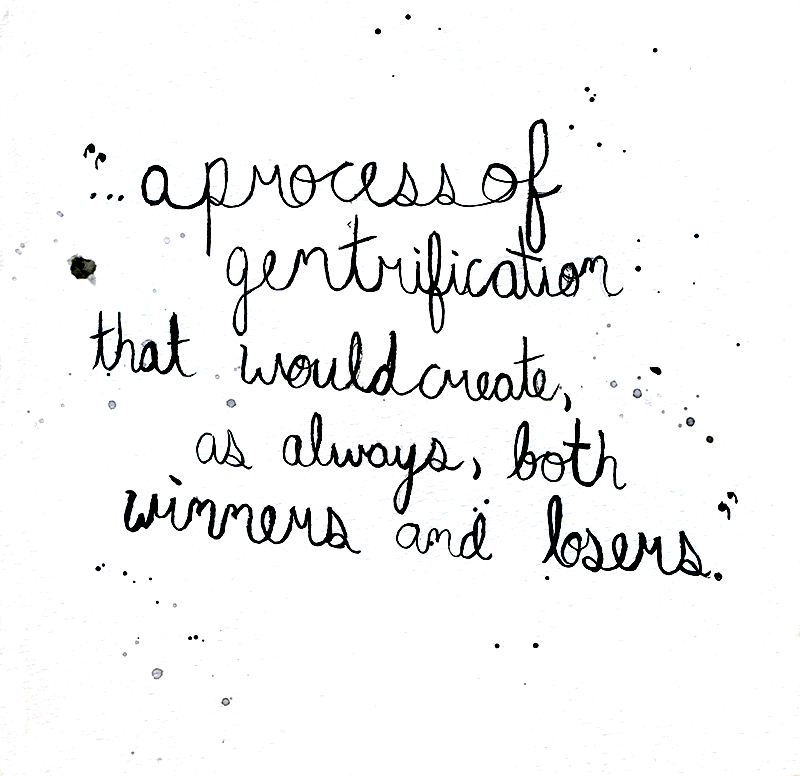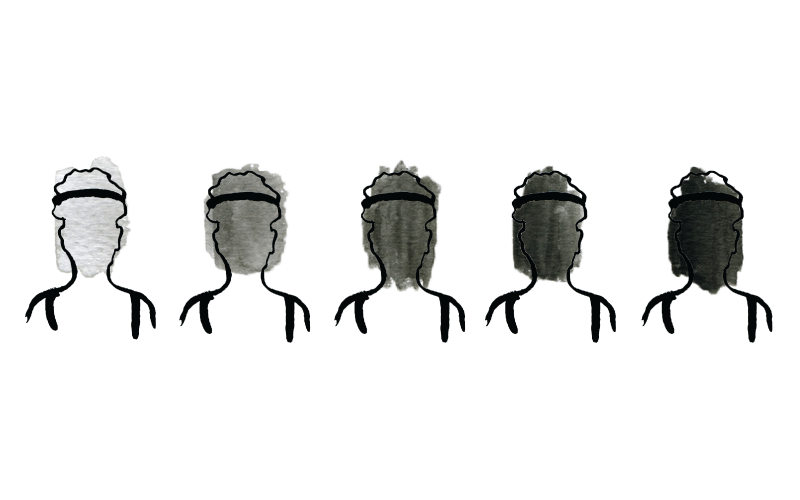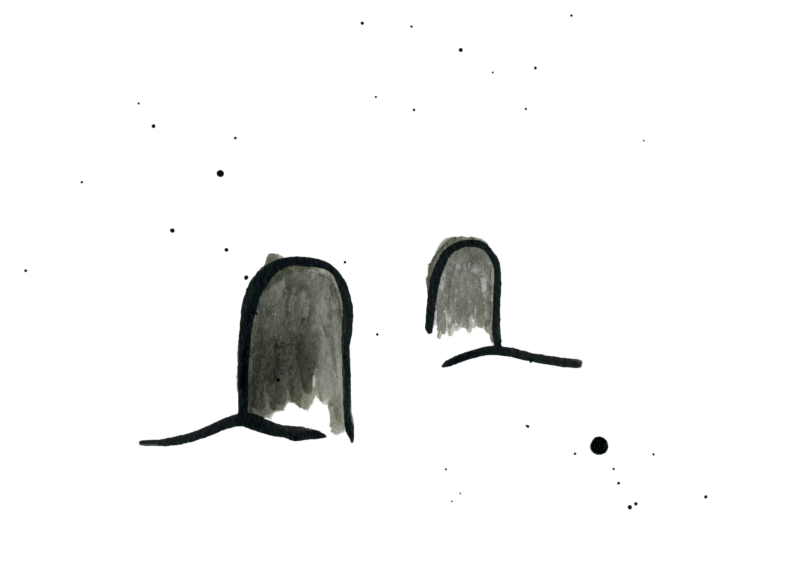In a society any less dynamic and complex, David Halberstam might never have found a place; he might have wandered the hills as a holy madman. He believed it was his personal destiny to feel the first impact of changing currents in national life. He went where the action was, kept his face turned to the wind. That meant Mississippi first, to cover civil rights, then Vietnam, then into the New York media scrum, which he maybe loved too much. His self-conception was always grand, sometimes risibly so. But in the turbulence of mid-20th-century America, he found a challenge equal to the scale of his ambition.
Halberstam’s identification with this country was intense: an identification with the immigrant his grandfather was, with an immigrant’s desire to make a mark. Even so, he was a critic of its conservatism, its materialism, and most of all its complacency. The postwar consensus seemed to him stultifying. The Black and Jewish margins were where the action was; the Protestant middle degenerate, effete. The cryptograph of those Protestant values, and what they cost, were his subject in his most enduring book, a Vietnam chronicle, The Best and the Brightest. A military doctor’s son, a Harvard graduate, and Jewish, the man Halberstam identified with most was John Paul Vann, a foul-mouthed maverick intellectual Army officer, the ultimate good soldier in a bad war. He would search for Vann in every institution he confronted thereafter.
Many mid-century American Jewish intellectuals began their lives on the radical left and ended, notoriously, on the neoconservative right. Halberstam began on the anti-communist left — he believed, before his bitter disillusionment, that our presence in Vietnam was necessary — and remained there more or less to the end. Late in his career, rich and fettered, his romance with America became less fraught. He was never a triumphalist, but he became a warm appreciator of his country and the freedom of thought it had provided him. Indeed, he became almost indistinguishable from the establishment figures he had once derided: a man of the center. Which was perhaps where he had wanted to be all along.
In 1979, Halberstam did something that must have struck his contemporaries as eccentric. He was then at the height of his fame as a Pulitzer-winning war correspondent as the author of The Best and the Brightest and The Powers That Be. His books were not only critically successful: they were best sellers. He could have taken on any subject for his next project. And the subject he chose was — professional basketball.
The Breaks of the Game, Halberstam’s account of a season spent with the NBA’s Portland Trail Blazers, was not the first thoughtful book ever written about professional sports. It was not even the first brooding tome on basketball written by a New Yorker: Pete Axthelm’s The City Game, once renowned, now forgotten, preceded it by three years. But it did inaugurate a genre. Feinstein’s A Season on the Brink, Bissinger’s Friday Night Lights, and a hundred lesser examples would scarcely have been possible without Halberstam. He saw that what went on between the lines was almost the least interesting thing about the NBA, into which were vectoring the most urgent issues of national life: race, celebrity, the cult of the self, the scourge of television. The Breaks of the Game contains little game analysis. When the Blazers’ season ends anticlimactically, we know little of how they played and none of the season statistics but a good deal about how the players negotiated the stark differences that existed in the locker room. For Halberstam, the arena of conflict is not a hot gymnasium but rather the matrix of money and class, the humid competition for belonging.
In the week before the first practice, they began checking into the small hotel near the base of Mount Hood in the small suburban community of Gresham, Oregon. They were rookies and free agents, and the odds were always against them; their motel rooms were paid for, and there was daily meal money, but in a profession where more and more things were guaranteed, they were at the point in their careers where the only thing guaranteed was a return airplane ticket back home in the likely event they were cut. The veterans, the young princes of the sport, who all owned homes in the swank upper-middle class sections of Portland, were not required to arrive until the last moment, as befit their superior status.
Part of the pleasure of reading The Breaks of the Game now is that it takes one back to the pre-ESPN era of sports, before the athletes became remote, unfathomably privileged figures. In 1979, a Trail Blazer was a member of the Portland community, shopped in its stores, ate in its restaurants. His interactions with his neighbors, however awkward and shadowed by his celebrity, were still relatively unmediated. Free agency was just beginning to give star players some freedom of movement; most players still hoped and expected to remain with one team for the majority of their careers and to trade on their local celebrity after their careers were over, selling cars or sporting goods to fans with memories of badly ventilated facilities and players still mostly white. Halberstam captures the NBA on the cusp of tremendous change: a process of gentrification that would create, as always, both winners and losers.
In journalism, as in any field, it is a distinct advantage to be a tall, rangy, good-looking, physically charismatic man, and Halberstam was all of these things. He had size, physical and otherwise. He loved to be “inside.” One imagines his calculated first foray into the locker room, his deliberate claiming of space, his assumption of his right to be there in the sanctum sanctorum, and the moment when some critical veteran player made a gesture that let everyone know that the writer’s presence would be accepted, the project ratified. Halberstam gathered the material that emerged only after most reporters would have stopped. The legendary put downs. The retired player, now driving a city bus, who wants a tryout with his former team. The scout in his 60s, still traveling the country, eating the lonely per diem meals. These stories, told by the coaches and players, collectively represent the mythology of their world, its tribal meaning. This is the poetry of an institution.
Black athletes were then in the vanguard of a newly emboldened Black America. Halberstam seems to have been invigorated rather than unsettled by this. The racial divisions on the Blazers were a threat to Blazers coach Jack Ramsay, with whom Halberstam largely identified, but basketball was not so important to Halberstam (as it was to Ramsay) that he demanded that civil rights be sacrificed at its altar. In a sense, the reporter who had made his name covering civil rights and combat was escaping from a turbulent world into the male fantasy domain of sports, but in another sense he was merely carrying on his investigation of an entropic America by other means.
Halberstam was sometimes sentimental about sports even as he was rather gimlet-eyed about everything else. To accept as a tragedy the story of the Blazers’ decline that Halberstam tells in The Breaks of the Game requires that we subscribe to Ramsay’s romantic vision of basketball as a proving ground of character. Halberstam sees the NBA as having succumbed to the networks’ demand for spectacle in return for ratings and the revenues that went with them, obscuring the intricate geometry of the game. Television is a frequent villain in Halberstam’s work. Like Marshall McLuhan, Halberstam was a talk-show natural — which may have seeded his distrust of the medium. In Halberstam’s telling, the lure of television made NBA players more self-conscious, less likely to identify with their teams, and therefore less likely to play the game “the right way,” which is to say, the Ramsay way.
In sports the crucial change had been caused by the coming of television. Of the major American sports, basketball was perhaps the most interesting in this regard because in comparison to football and baseball it had a shorter history and it was less rooted in the national myth . . . Very quickly the commercial norms reached the players themselves and the norms were always for bigger and bigger money. In the evolution of modern sport a league’s success was no longer defined by the quality of its play . . . but by how the networks — or more accurately the great national advertisers — saw it.
Halberstam’s stated subject might be Vietnam, or the auto industry, or professional basketball, but the meta-subject that crosses all of his work is the status dance: the subtle shifts of professional life, often invisible to outsiders, that modify and challenge the self-image of the participants, that lead to small scenes of drama in bedrooms and barrooms. Halberstam was fascinated by immoderately ambitious men, and he was a cultivator of the powerful even as he did not always respect power. His amour propre was both a strength and ultimately a limitation. He could use his own drives to see into the lives of other striving men, often sketching them with startling insight, but he could not really imagine the lives of others in their own terms. For Halberstam, a man was finally what he desired and what he would do to satisfy that desire, the price he would pay himself and the cost he would extract from others.
Halberstam is nothing if not a cultural materialist of a rather hardheaded sort. There are not, for Halberstam, an infinite number of human motives. Nor is there really any room for mixed motives, or for conduct that is essentially motiveless. There is admiration and respect in Halberstam’s worlds, and of course hatred and resentment, but there is strikingly little love. Halberstam’s tough-mindedness is a strength, one of his signature strengths — and then in the end it is a weakness, an absence.
Halberstam’s life of striving and competition had not one Rosebud, but two. The first was his older brother, Michael, a prominent cardiologist who wrote medical journalism, book reviews, and, in 1978, a well-received Washington novel, The Wanting of Levine. Michael was killed in 1980 after surprising a burglar in his home. The other was David’s Harvard classmate, J. Anthony Lukas, who also covered Vietnam for the New York Times but is now best known for Common Ground, his monumental social history of the Boston school integration struggles of the 1970s. Like Halberstam, Lukas was a vain and self-absorbed man and a journalist of great talent and range. For four decades, the two had a pitched status rivalry leavened by mutual respect. Halberstam won first laurels with The Best and the Brightest, but Common Ground was if anything the more celebrated book, sweeping the major non-fiction awards in 1986. But as Halberstam continued to ascend, Lukas began to struggle. His last years were desperately unhappy, and he died of suicide in 1997 at the age of 63. These deaths shadowed Halberstam’s later life, creating debts impossible to repay.
Institutional life interested Halberstam enormously, in both its generative and its sterile aspects. All human organizations, from corporations, to prison gangs, to universities, share certain essential characteristics. The organization’s true purpose is often clear only to those in the innermost circle, while an appealing ethos is presented to the rest to foster identification and belonging. The leaders seek to promote the idea that their interests are inseparable from those of the organization, and that only they are capable of protecting those interests. And as Halberstam understood, the inner drama of rank and privilege is often more compelling to the participants than whatever might threaten the organization’s purpose.
Halberstam was an admirer of the Columbia sociologist David Riesman, author of The Lonely Crowd, one of the defining books of the 1950s. As Riesman saw, the story of the post-war era was the collision of the individualist mythos of America with the metastasizing corporations and government agencies that had begun to accrue enormous power. Riesman and Halberstam both saw that this struggle was changing the American character, that the country’s consolidation of power was exacting a cost in the form of a growing despair and stasis. Halberstam eventually was willing to walk away from the Times, the ultimate status-giver in the world of journalism; he understood that the institution exacted a high price for the status and that was revocable upon a whim. Therefore, it was not a good idea to get too attached to it.
Again, the pull of the biographical impulse is felt here. Halberstam’s enduring interest in the contest between the will of the individual and the will of the institution may have had its genesis in the life of his father, Dr. Charles Halberstam, an Army surgeon. The senior Halberstam was a man of talent and drive who spent his life yoked to a vast, impersonal bureaucracy that offered common purpose and identity in exchange for loyalty. Halberstam reenacted his father’s drama at the Times: where he made his name, to which he brought great honor with his Vietnam coverage, and with which he finally broke, with some bitterness on both sides, over a rather petty question of personal prerogative. Halberstam saw institutions all the more clearly because his egotism inevitably brought him into conflict with them. But in his subsequent success as a freelancer he exercised a privilege that he perhaps saw his father as having been denied.
Halberstam derided establishment values in The Best and the Brightest, but those values — physical courage, emotional continence, good form — are the ones he validated over and over again in his career. His fight with the Kennans and the Achesons was always a case of internecine warfare, even if Halberstam was an honorary WASP rather than the genuine article. If World War II was won on the playing fields of Eton, Vietnam for Halberstam had been lost in the senior common rooms at Harvard, by the fathers of the boys he had gone to school with and perhaps had hated. Over time, his views softened. He satirized the cant of military men like General Westmoreland, but late in his career, he wrote an almost hagiographic biography of a football coach, Bill Belichick, a man as blindly self-assured as any four-star. The Education of a Coach is a penetrating biography of a cipher, a man who perfectly fulfills the observation of his mentor, Bill Parcells, that a good coach is a person smart enough to do the job and dumb enough to think it matters. In coaches, curiously, Halberstam found figures of authority to whom he could symbolically give his love.
The effect of a coach on his players is almost impossible to narrate, regardless. A coach is an ethos, a gestalt, a culture. Why professional athletes will get behind one man and not another when both almost inevitably possess the same collection of nostrums must remain a mystery. In Jack Ramsay, Halberstam had found a man of dimensions, of human coloring; in Belichick he found a martinet. Ramsay is the more admirable man, but Belichick is the transcendent coach. Goodness and greatness are different species of achievement, sadly.
•
Longform nonfiction writers are routinely credited with writing like novelists, stock praise that has by now been emptied of meaning. In reality, what dialogue there is between the two is mostly marked by mutual incomprehension. Halberstam once attempted a novel, while bored with his job in the Paris bureau of the Times, but in fact his journalism is in no way novelistic. Language for him was chiefly instrumental. His style was formed in newsrooms, where writing quickly is a necessity and also often a source of prestige.
Halberstam is that interesting paradox, the good/bad writer. When he tried to lift his language, the results were usually discouraging and occasionally disastrous. The Halberstam “high” style was famously satirized by Nicholas Lemann in The New Republic (“They always said what Halberstam needed was a good editor, his sentences ran on and on, he piled phrase upon phrase and clause upon clause, he used commas the way other men used periods.”), and some of his later books (The Next Century; Firehouse) were impatiently received by the next generation of journalists. The shame of it is that Halberstam’s low style was a very useful instrument indeed: flexible, hard-wearing, admirably clear. It was in that style that he wrote The Reckoning, an 800-page history of the postwar automobile industry in the United States and Japan that has the narrative momentum of The Murder of Roger Ackroyd.
Halberstam’s reputation declined following his death in 2007, but lately it seems to be on the rebound. It was recently reported that Steve Bannon has been carrying around a copy of The Best and the Brightest, which is surely an intriguing fact, though what Bannon may make of the book is anyone’s guess. A recent Washington Post article celebrated Halberstam as a journalistic paragon. And the presentation of Ken Burns and Lynn Novick’s documentary on the Vietnam War seems likely to spur renewed interest in Halberstam’s war reporting.
Looking back at a career, we rarely wish that a writer had written more; our regret is almost always for the work done at less than the writer’s full powers. We would trade a vat full of the vin ordinaire for a single glass of the finer vintage. Halberstam probably wrote too much. His exuberance and his excesses were those of his country in the decades of its ascendance, a country with which his identification was intimate, personal, and entire. •
All images by Emily Anderson.









